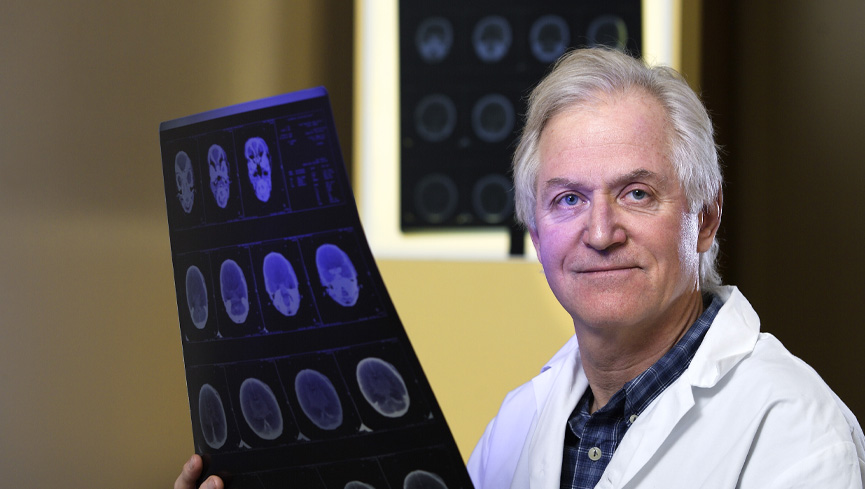A study by a team of University of Lethbridge neuroscientists has shown that tactile stimulation shows much promise as a non-invasive method of slowing the onset of dementia in aging mice and could be an additional therapeutic intervention for people with Alzheimer’s disease.
January is Alzheimer’s Awareness Month and the Alzheimer Society encourages everyone to learn more about dementia and its impact on Canadians. Alzheimer’s disease (AD) is the most common form of dementia and represents a global health crisis.

Current treatment options only serve to slow the progression of the disease, not to cure or prevent it. That’s why researchers at the Canadian Centre for Behavioural Neuroscience are working hard to increase knowledge about what happens in the brain with AD and find more therapeutic treatments. A recent study by Drs. Bryan Kolb, Majid Mohajerani and their team points the way to a possible easily accessible treatment for AD in humans. Working with a mouse model of AD, the researchers found that tactile stimulation (TS) in the form of light massaging slowed the onset of AD.
“These results suggest that tactile stimulation, which is a non-invasive and cost-effective intervention, could be applied to human AD patients, even after symptoms are obvious,” says Kolb. “Tactile stimulation, such as skin-to-skin contact for newborns or massage for adults, has been shown to benefit brain development and aid recovery from an injury. In this study, we assessed cognitive, motor and anxiety-like behaviours, as well as the presence of plaques in the brain and the volume of the hippocampus, the part of the brain that plays a crucial role in memory.”
The study involved mice specifically bred to develop AD. The mice either received TS daily from birth until weaning (21 days) or, in a separate study, they received TS for 15 days beginning at four months of age. Control mice received no TS. In both cases, the TS groups received light massaging with an experimenter’s fingers for 15 minutes three times a day.
At five-and-a-half months of age, the experimenters used a series of tests to assess whether TS had led to improvements in cognition, motor skills and anxiety behaviours and, at six months of age, the degree of plaque formation and hippocampal volume. Plaque formation in these mice normally begins at about three months of age and by six months, the plaque formation in the brain is saturated and is associated with large deficits in cognition, anxiety and motor skills.
“We found that tactile stimulation significantly improved cognitive and motor dysfunctions and reduced anxiety-like behaviours, regardless of whether the TS was administered in infancy or adulthood,” says Kolb. “On top of that, mice that received TS showed reduced numbers and sizes of plaques in the brain and greater hippocampal volume than mice that didn’t receive TS.”
The authors hypothesize that the TS stimulates the activity of the vagus nerve, which produces a variety of changes in the brain, including reduced inflammation and increased immune function, as well as increasing the production of neurotrophic factors, which are a family of molecules that support the growth, survival and development of neurons.
Along with being non-invasive, TS costs less than drugs, has few, if any, side effects and is easy to administer.
“These findings point to an easily adoptable form of treatment for AD and the more therapeutic interventions we can apply to this disease, the better,” says Kolb.
